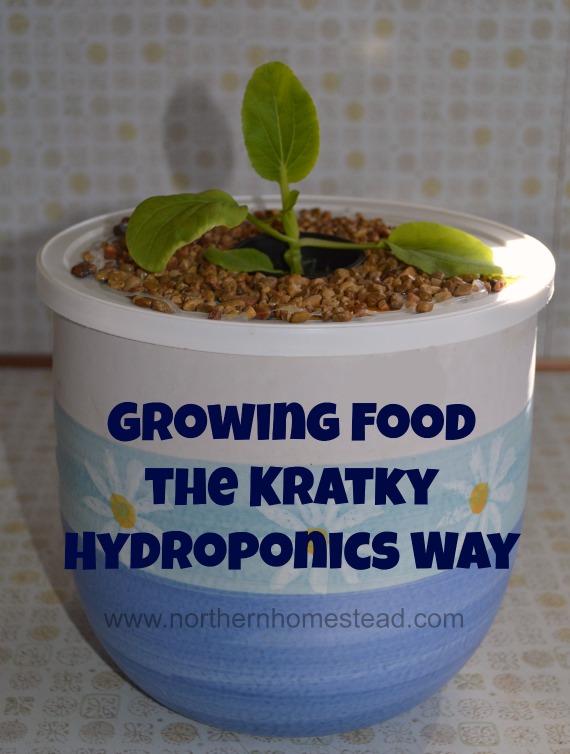
“Growing Food Using the Simple Kratky Hydroponic Method” is a topic of interest. Let’s discuss this method of hydroponics that allows for growing plants without using electricity or pumps. Growing food is becoming a priority for more and more people.
Homegrown food tastes better, is healthier, and is much more affordable. However, you might not be so lucky to own land, or your land is frozen half the year. Growing food The Kratky hydroponics method is one of many ways to grow food without land. If you are interested in hydroponics but are not ready to invest in a complex setup, then the Kratky system might be the one you want to explore.
What is the Kratky hydroponic method?
B. A. Kratky from the University of Hawaii invented this non-circulating hydroponic growing method that does not require any pump or air stones and no electricity at all.
A plant needs light, water, nutrients, and oxygen to grow. The Kratky method effortlessly provides all this. Add water with all the mineral solution needed into a container with a net pot and some rock wool (or any growing medium of your choice), plant your seed, and let it grow. See how to plant a hydroponics garden here.
As the plant grows, it will “drink” the water. The gap will be filled with moist air, providing the roots with oxygen.
When the plant uses up all the water, it is ready to be harvested. For plants needing longer to mature, keep the container about half full with nutrient water.
Plant roots need air, water, and nutrients to grow. Start with filling the container to the bottom third of the net pot. As the plant grows, the nutrient level in the container will diminish. For example, lettuce needs about one gallon for its entire lifespan. When using a one-gallon container, the solution would be used up at harvest time. If refilling is necessary, do not fill up the container to the top again. Always leave an air gap for the air roots. Keeping the solution level at half full is good.
What will you need for the Simple Kratky Hydroponic Method?
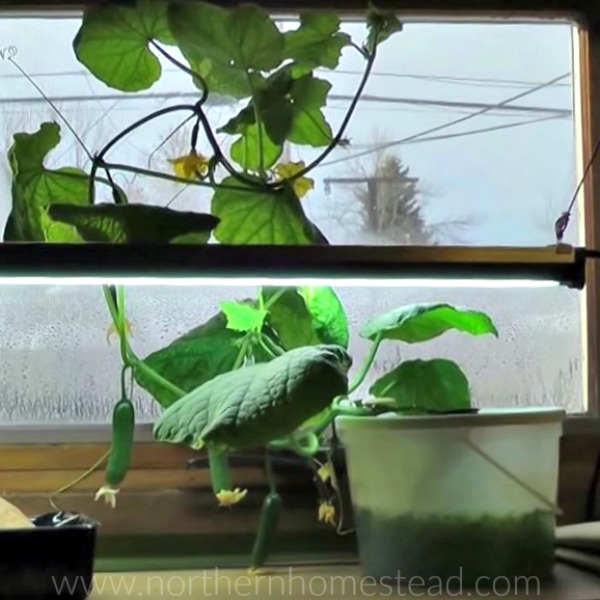
-A container to grow in. Any watertight container will do. Choosing a container that does not let light through is good for preventing algae from growing (see the picture above; the water is green because of algae).
The container can be of any size for as many plants as you want to grow, meaning if you’re going to grow one small plant, you choose a small container; if you’re going to grow a dozen plants, you obviously will need a bigger container, or maybe even a large reservoir. You can grow individual plants or multiple plants in one Kratky hydroponics system. Note, for the Kratky method, all the plants in one container must have the same growth stage to ensure that the plants’ roots get enough water and enough oxygen.
For example, one lettuce needs, give or take, 1 gallon of water with a nutrient solution in its lifespan. A milk jug or any other one-gallon plastic container would work for it. If you want to grow three lettuce plants, set them, and forget them till they are done, you will need a 3-gallon container. Or, as I explain below, you can also use a smaller container and refill it.
Bigger plans will need more nutrient solution. A bucket, rubber box, or whatever receptacle you have on hand can be turned into a growing container. It is just like container gardening, except these containers need to be able to hold liquid. Even though any simple containers will do, I like to use a nice potting pot and add a lid so it looks decorative, too.
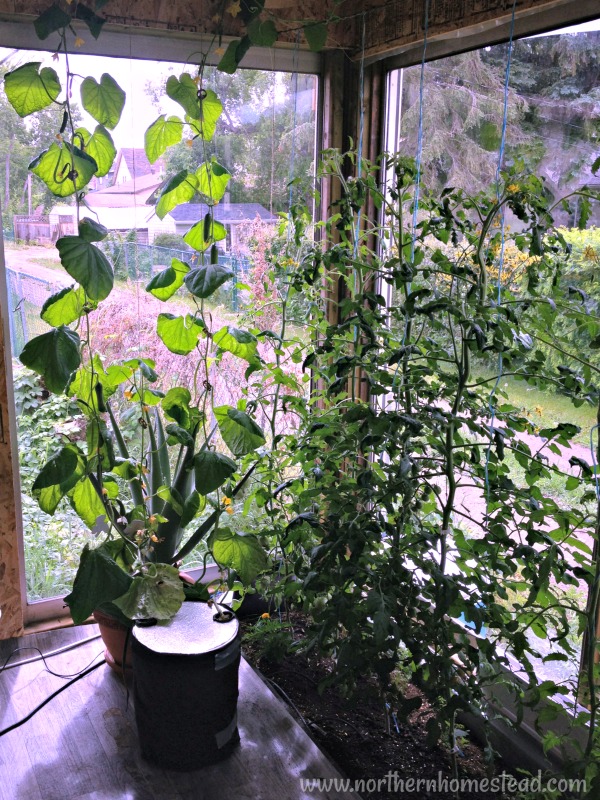
– Lid with a hole for the plant. An opening in the plastic lid can easily be cut out to fit the net pot. For a 2-inch pot, you will need a 2-inch hole. Alternatively, a lid can be cut out of styrofoam, and the bucket can be wrapped in black material or aluminum foil to prevent light from coming through (See picture).
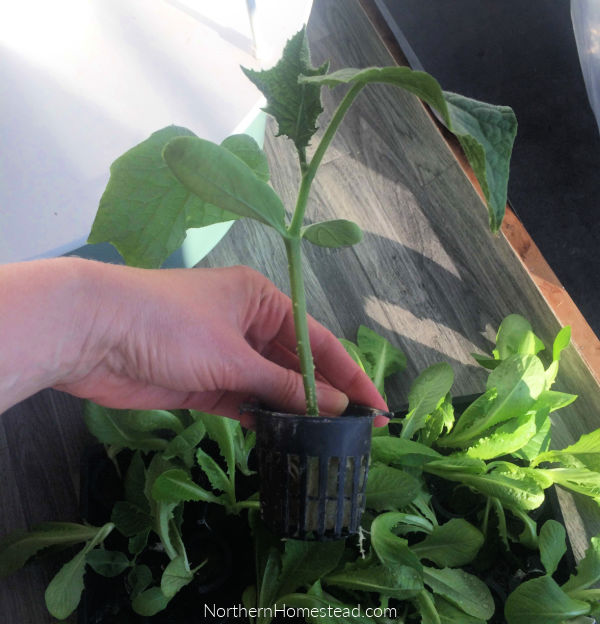
-A Mesh Net Pot. We like the two-inch in diameter, but you can get them in different sizes.
– Rockwool starter cubes, Oasis Rootcube, Rooter Plugs, or any other hydroponic growing medium you choose.
– Net pots to hold the Rock wool and the plant. The growing medium has to be a bit smaller than the net pots. We use net pots that are 2 inches in diameter
-A hydroponic solution, we will talk more about the fertilizer below.
–PH Control Kit for proper pH level balance.
–Having a PH and PDS meter ready is helpful to have.
-A light source, sunny window, or grow light.
Hydroponic Fertilizer
You can use whatever nutrient brand you want or is available at your local supplier. We prefer dry, concentrated nutrients. General Hydroponics MaxiGro is a simple product to start and what we use. The green is for green plants like lettuce and also to start fruit-bearing plants like cucumbers.
General Hydroponics Flora Grow, Bloom, Micro Combo Fertilizer set is a liquid solution for all stages of growth.
General Hydroponics Ph Control Kit helps you to keep the PH at 5.5-6.5.
Since we do a lot of hydroponic gardening, we have started using more advanced hydroponic fertilizers. You can read about it here.
What food to grow the Kratky hydroponics way
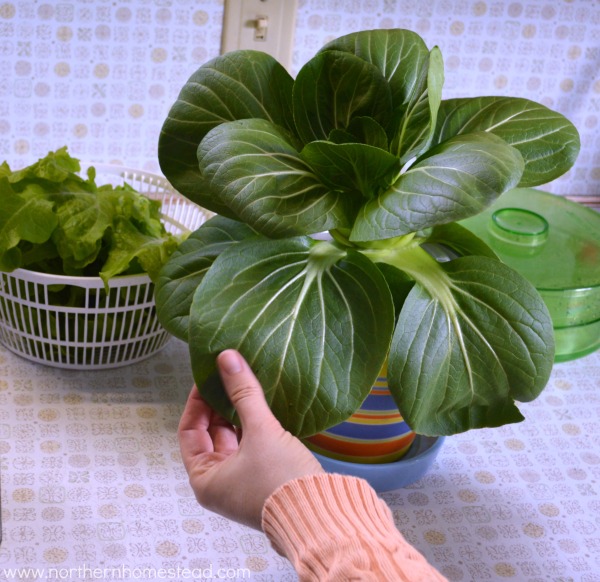
The simplest and most effective plant for the Kratky hydroponics method is lettuce. You need one gallon of the solution and can plant and forget it until harvesting. But lettuce is not the only plant that can be grown. Any above-ground plant can technically be grown the Kratky hydroponics way. Root vegetables are better grown in soil.
Depending on the size of the container, it might not be all that set and forget. Bigger plants need to be refilled, ensuring the container stays about half full, allowing the air roots to have lots of oxygen.
In our experience, the Kratky passive growing method works well for fast-growing plants. It works great for cucumbers; they grow fast, produce, and die back; now, you can start new ones.
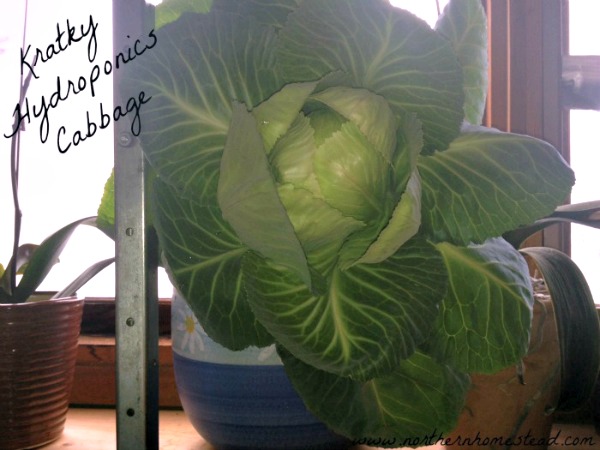
Here is a Kratky hydroponics cabbage plant in our laundry room window. It was more fun than food, to be honest, but sometimes an experiment is worth it. The simplicity of the Kratky method offers a great option for exploring new ways to grow your own food.
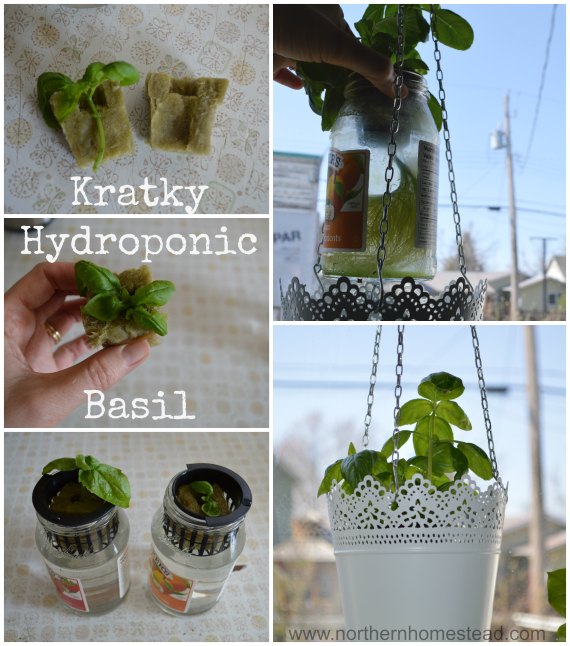 Here, Kratky method basil is in our kitchen window. For small plants like herbs, Kratky mason jars are great. We started the basil from a cutting, which grows in a recycled glass jar that stays in an ornamental hanging pot. Kratky hydroponic can be nice, too ;).
Here, Kratky method basil is in our kitchen window. For small plants like herbs, Kratky mason jars are great. We started the basil from a cutting, which grows in a recycled glass jar that stays in an ornamental hanging pot. Kratky hydroponic can be nice, too ;).
Growing tomatoes might be better in aeroponic than in a non-circulating hydroponic. Still, if passive hydroponics is all you can afford, go for it. In 12 weeks, the plant shows remarkable growth and has set fruit, too. Also, if you want to grow tomatoes, choose a determinate, early cherry tomatoes varieties.
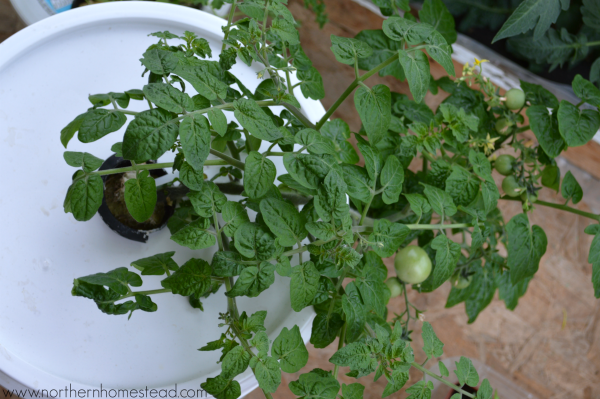
For fruit-bearing plants like tomatoes, you can start with a smaller container and fill it with a solution using the green fertilizer. Transfer it into a bigger container when the plant outgrows the small one, and start adding the fruit fertilizer. Remember, the plant need oxygen, so if you want to keep growing without any electricity the Kratky way, make sure the roots are half in the air, meaning the container is not filled to the top with the solution water blend. The air gup is essential for plant’s roots health.
Start growing food using the simple Kratky hydroponic method today. It is a simple and fun container gardening method suited for off-the-grid and water-saving growing. As all growing starts with planting read also Planting a Hydroponic Garden.
We invite you to subscribe and follow us on Instagram, Facebook, or Pinterest so you do not miss a thing.
Grow an indoor edible garden
Kratky hydroponic is a great way to grow food indoors in any weather. Read more about growing food indoors:

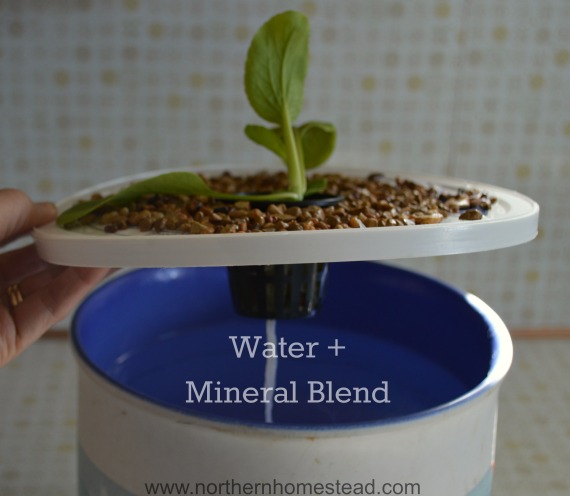
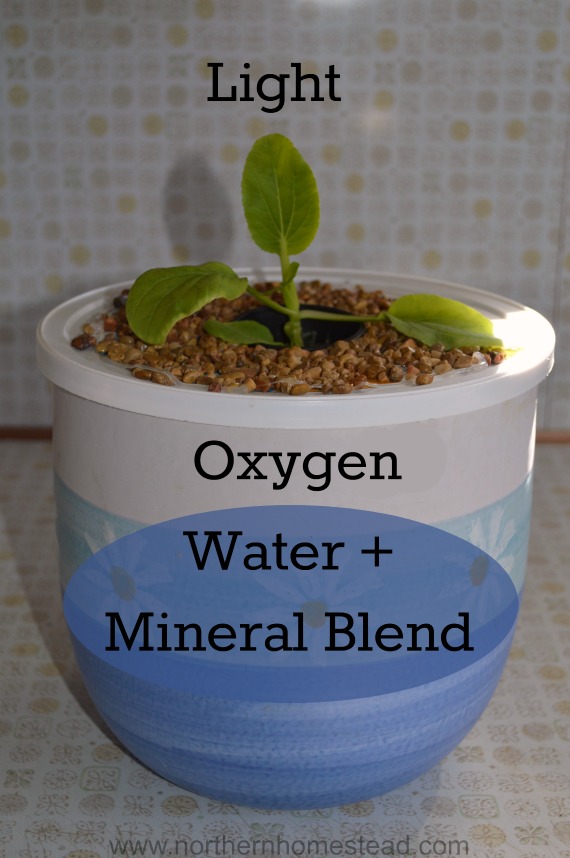



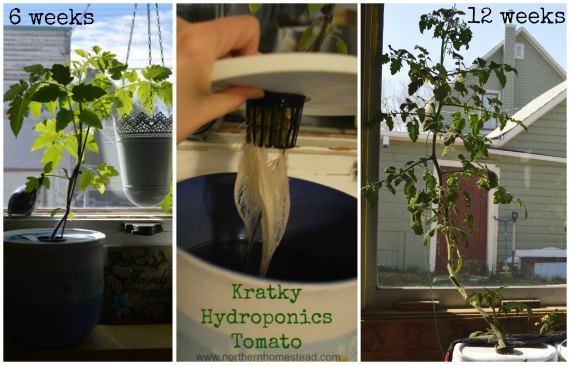
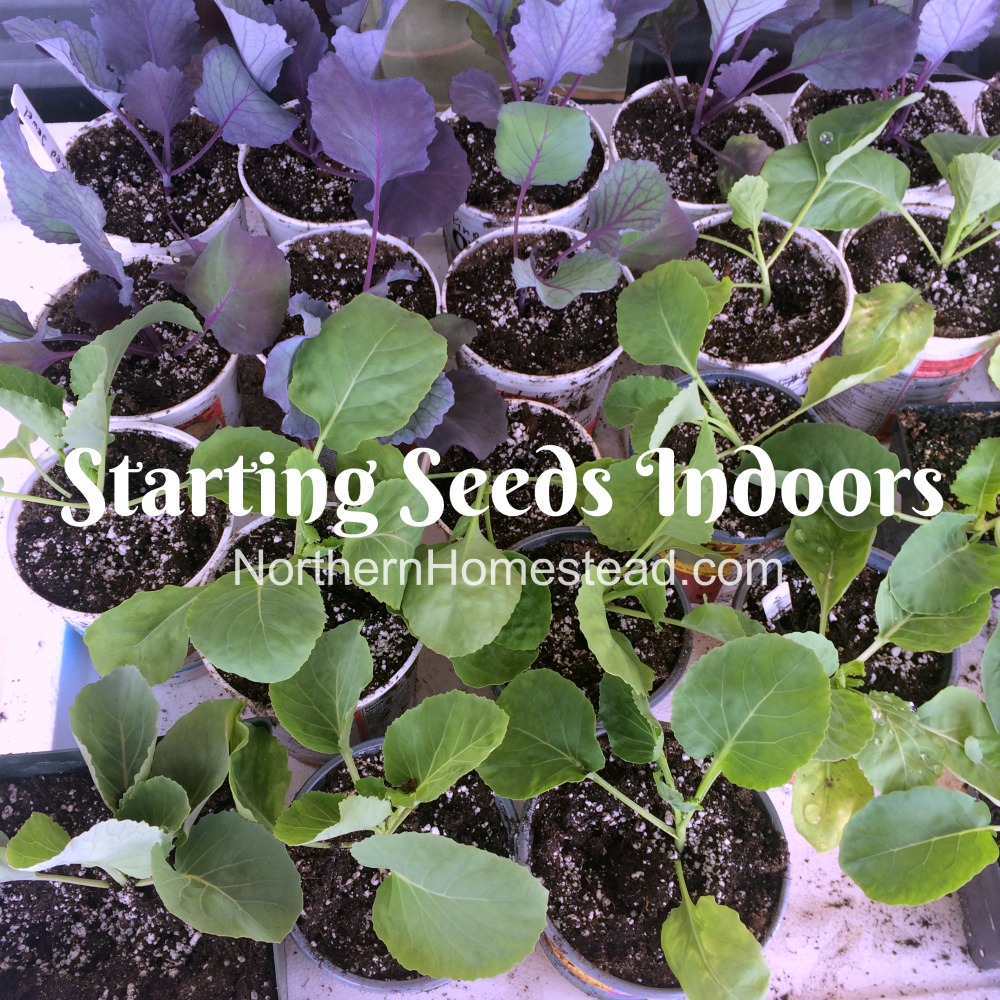
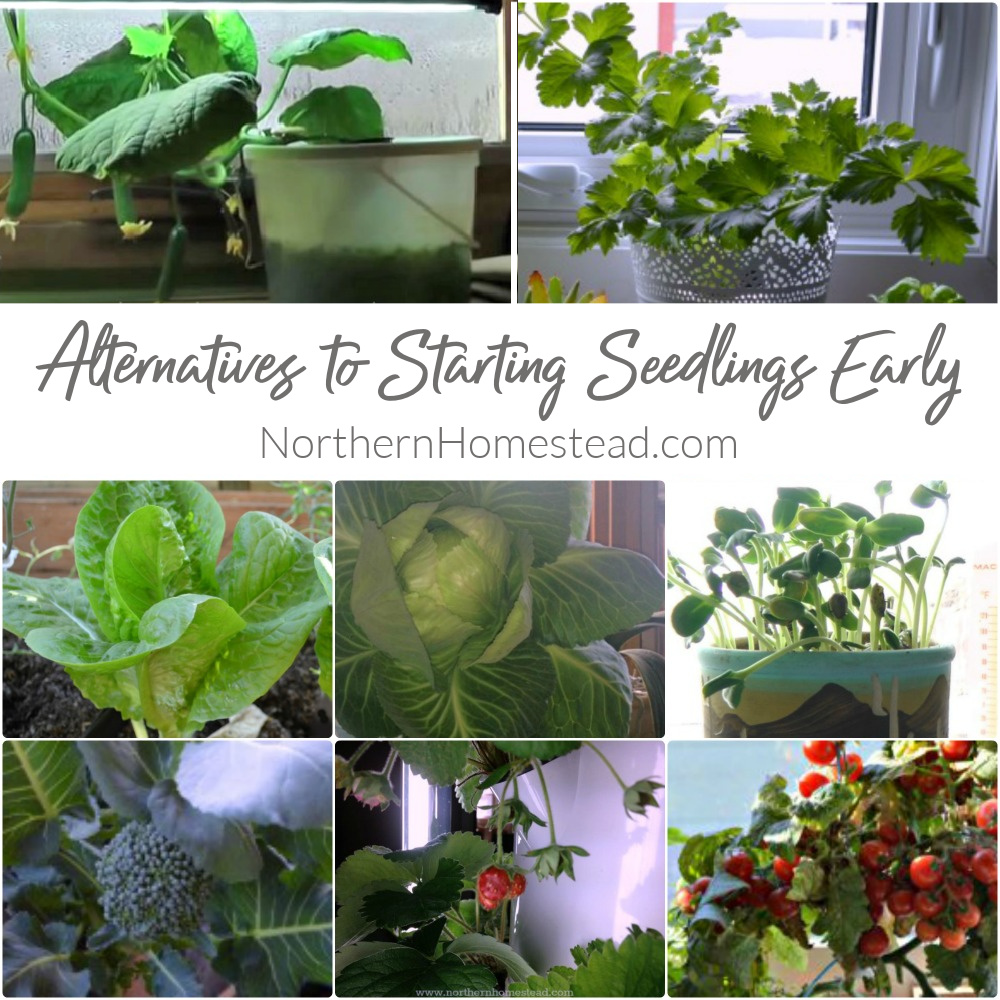
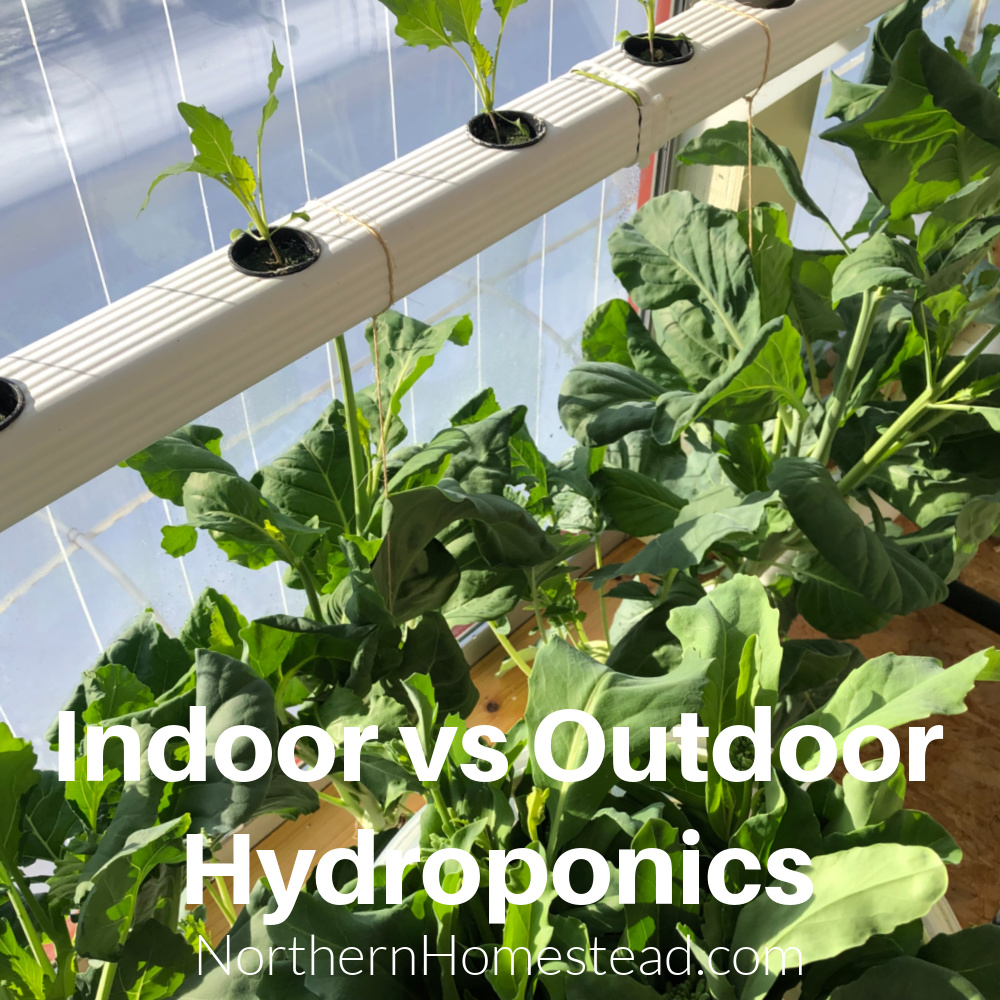
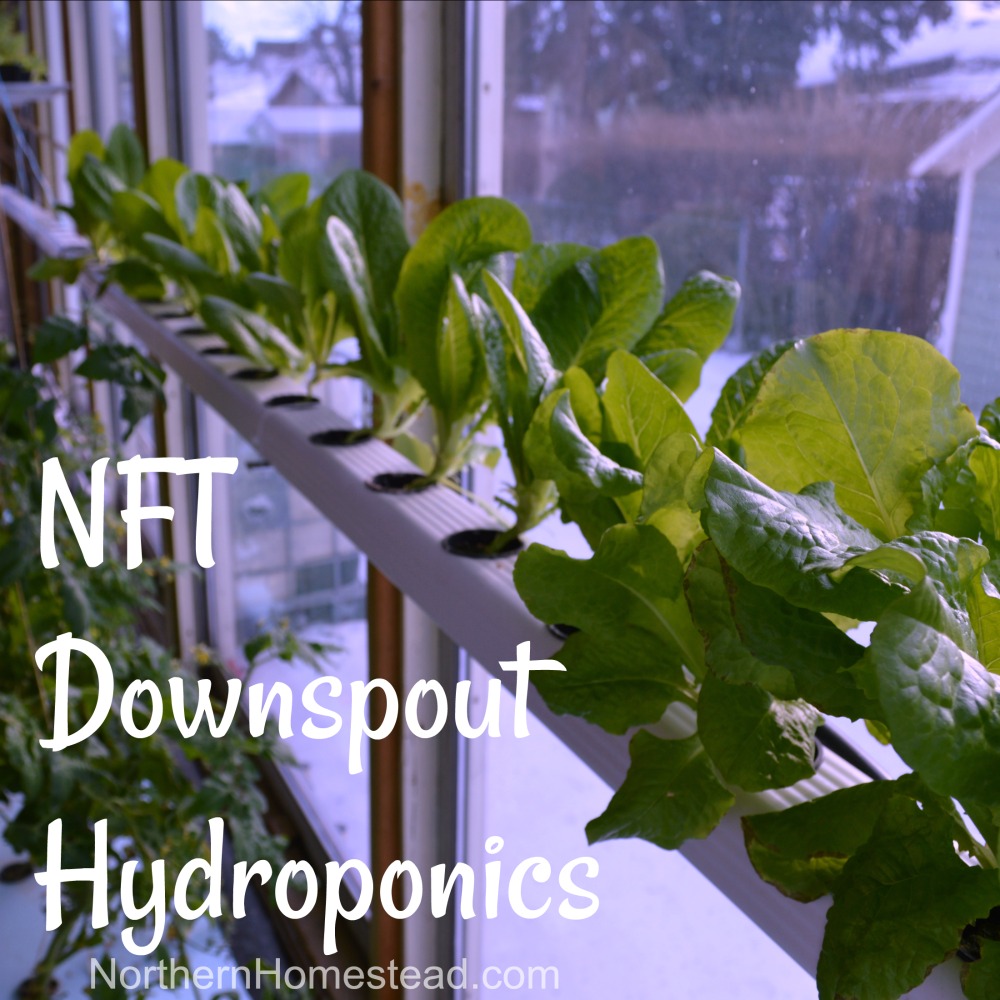
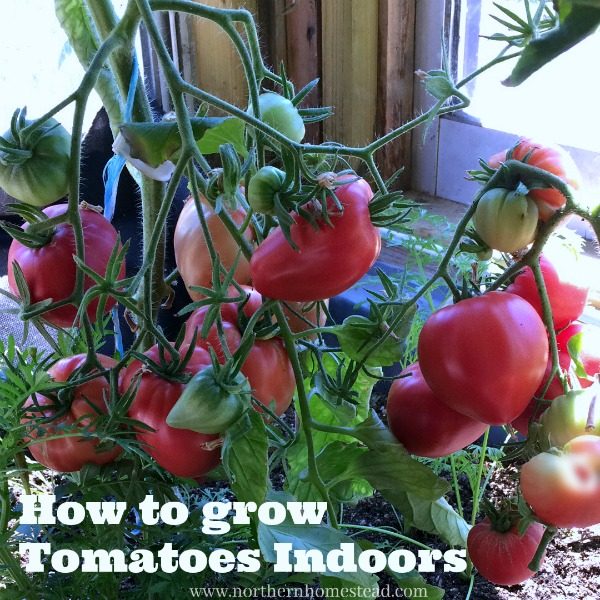
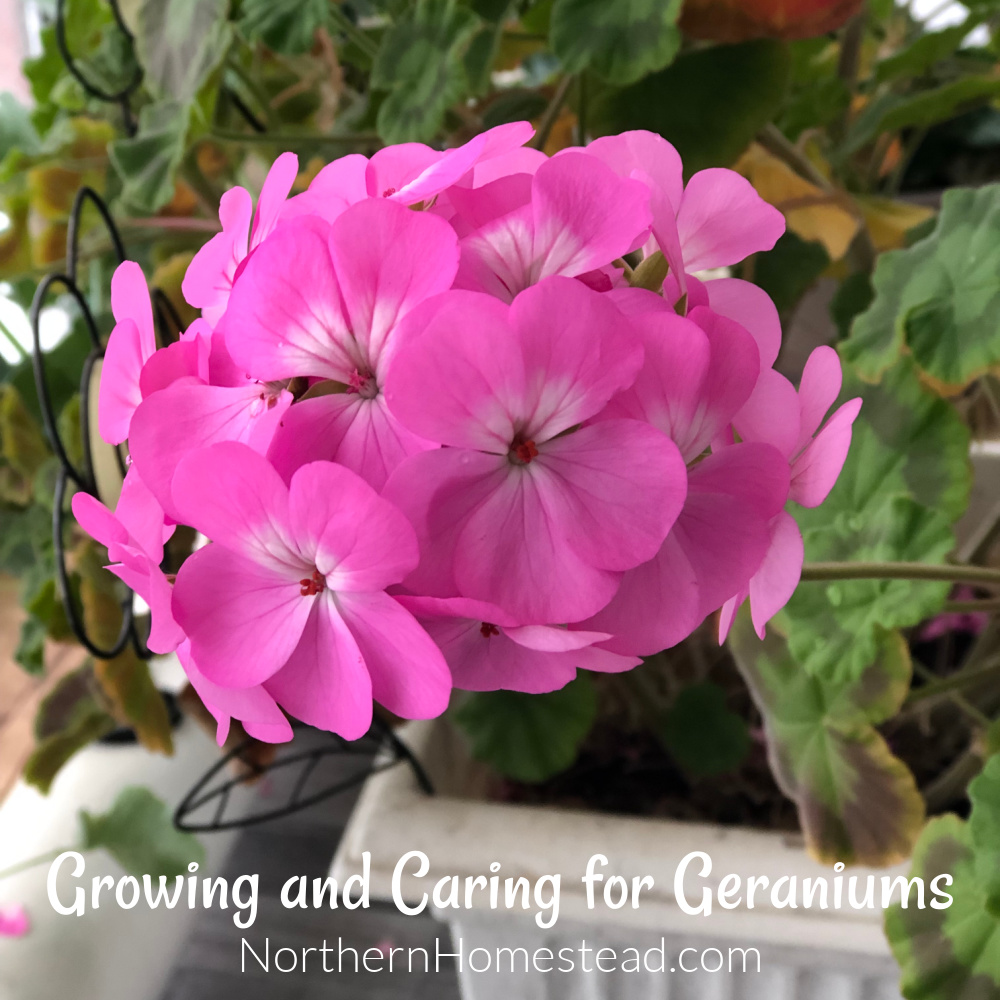
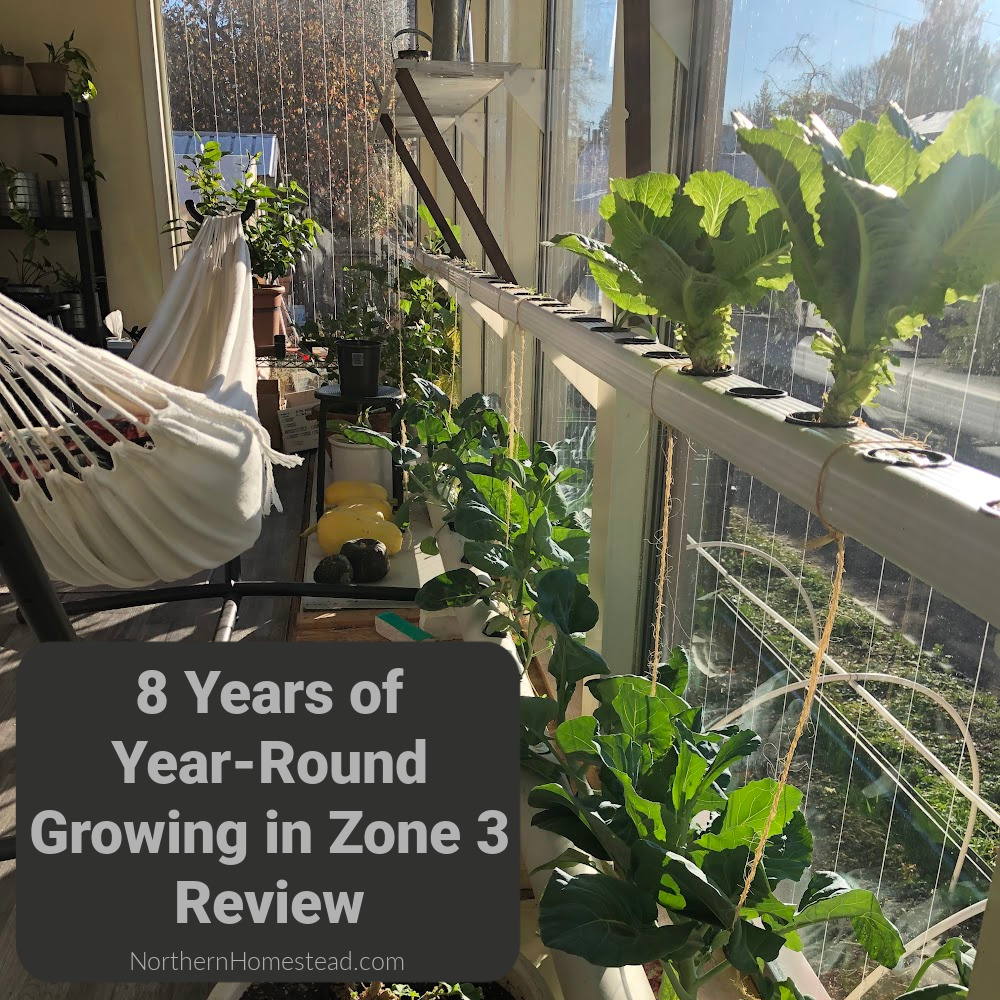
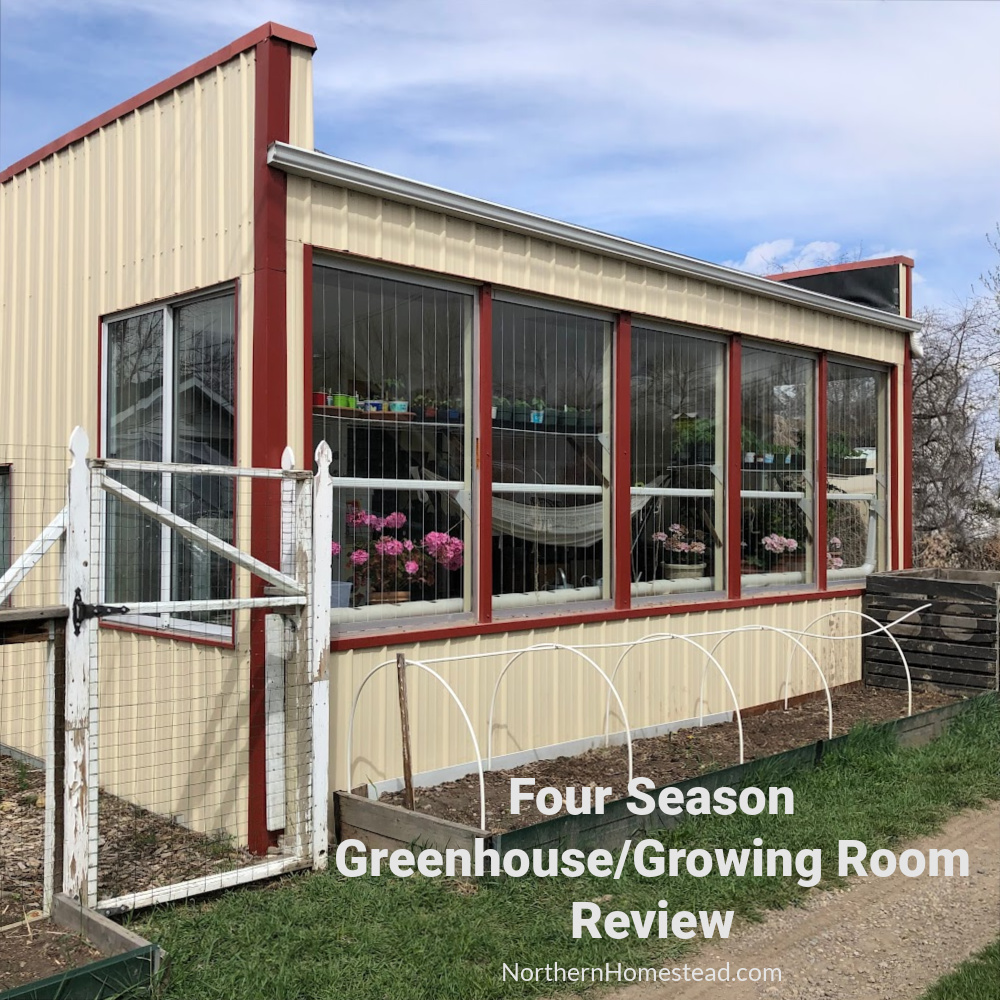
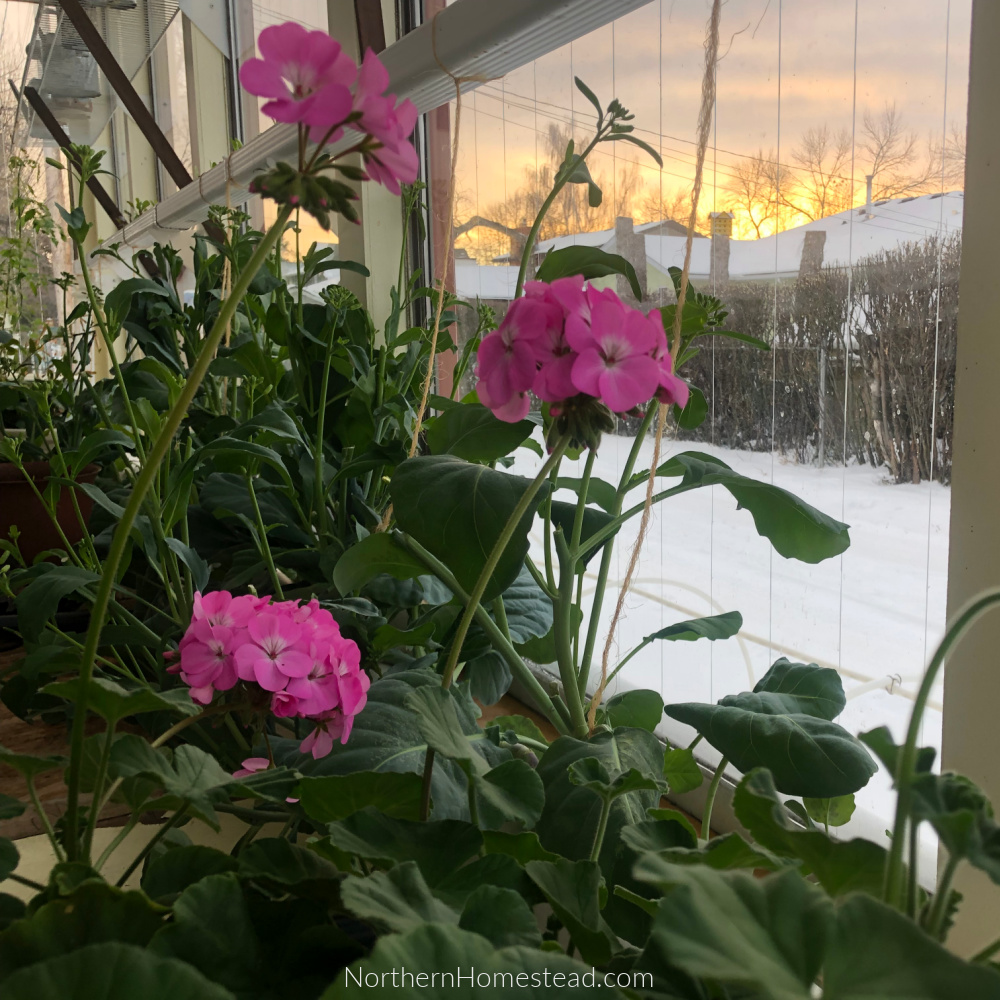
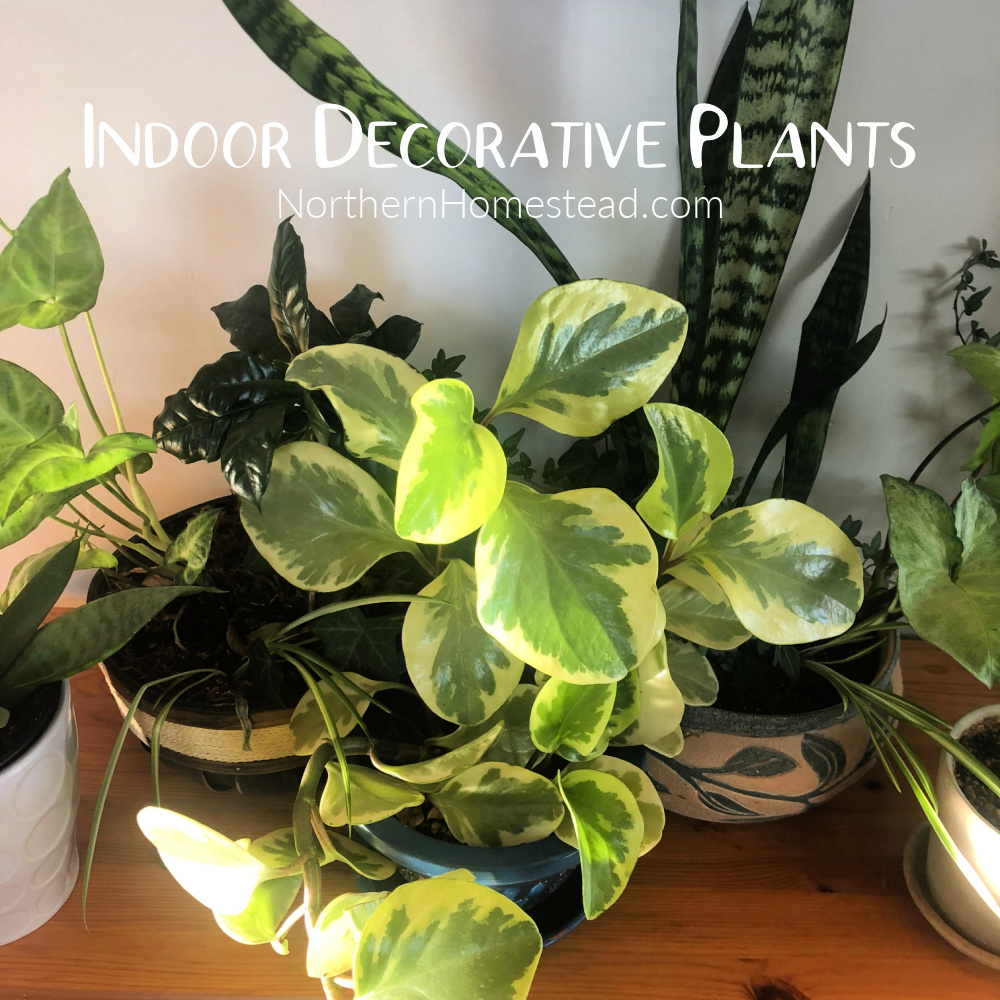
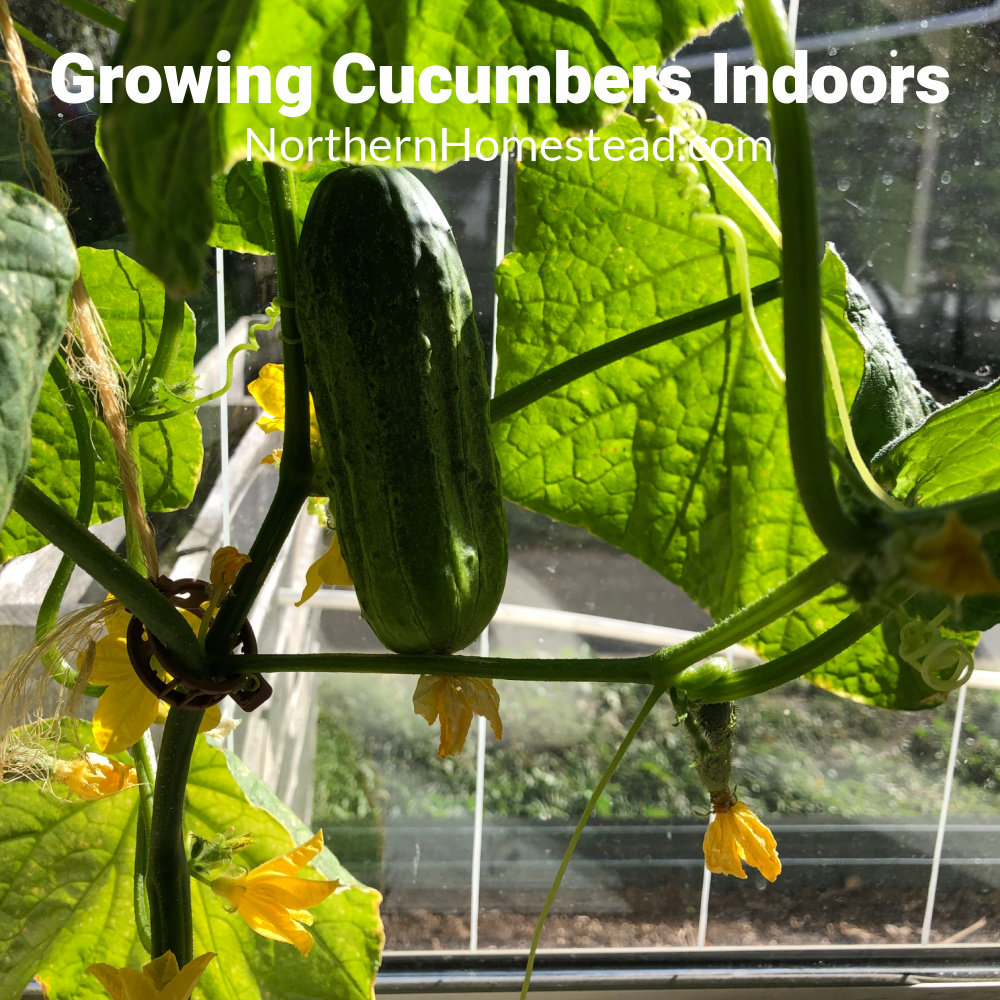
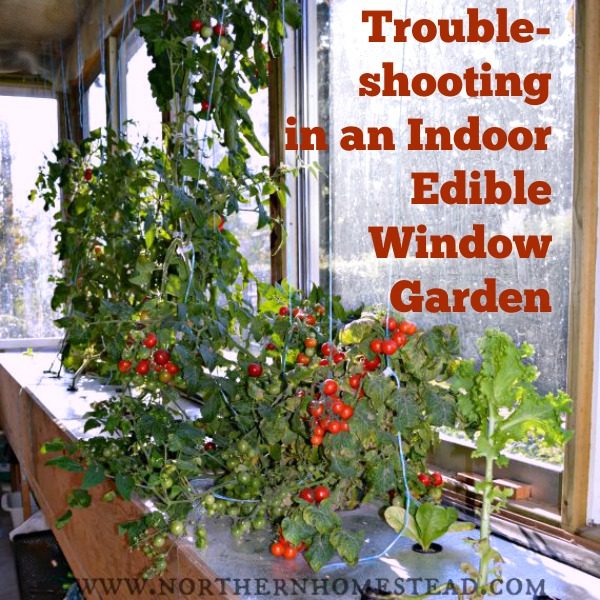

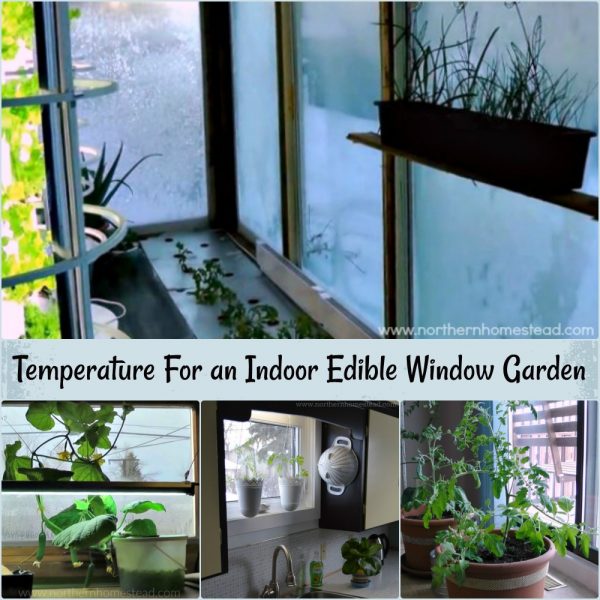
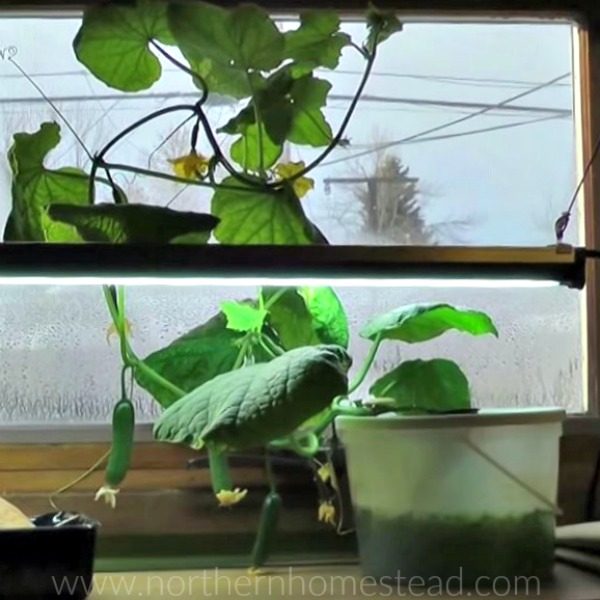
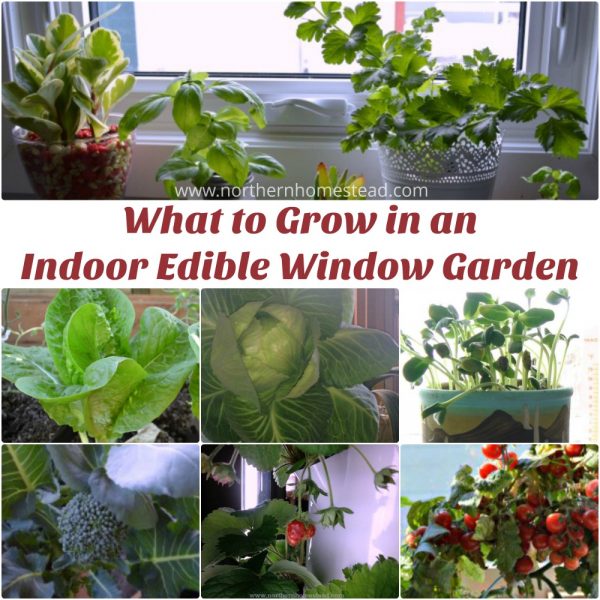
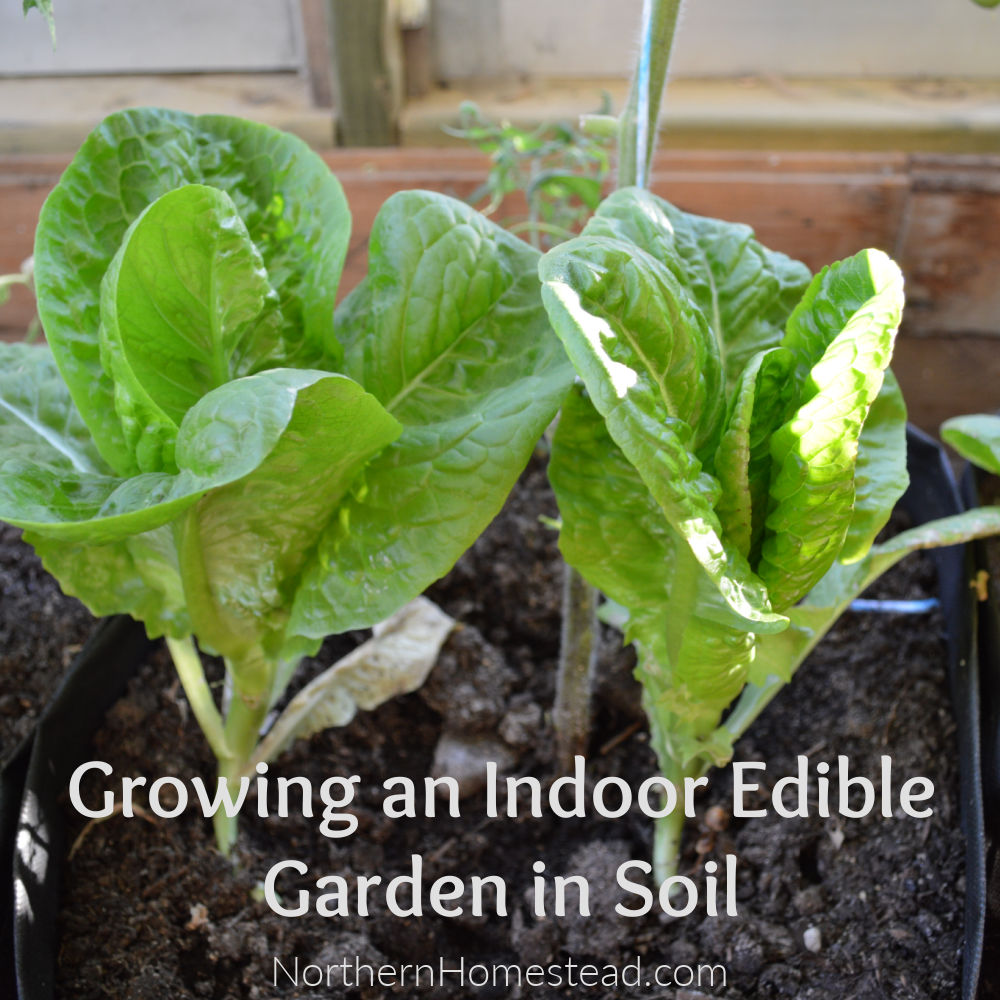
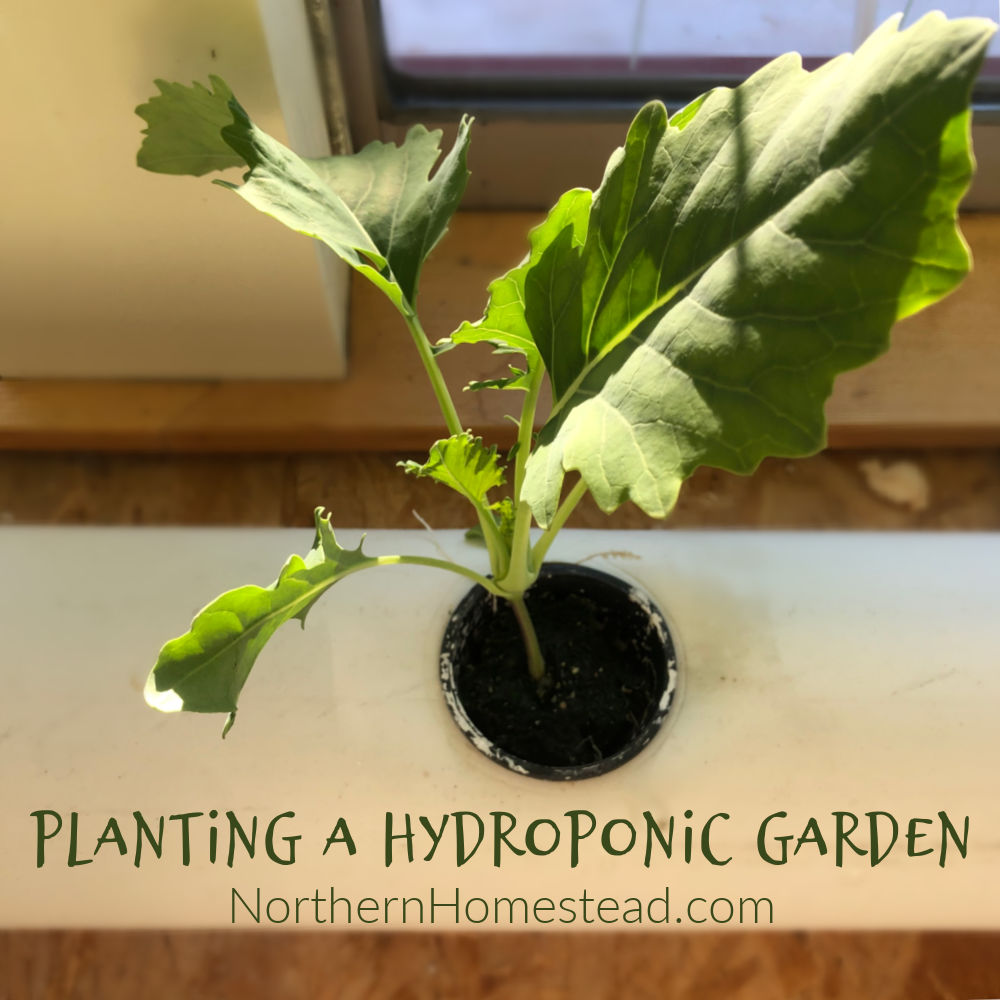
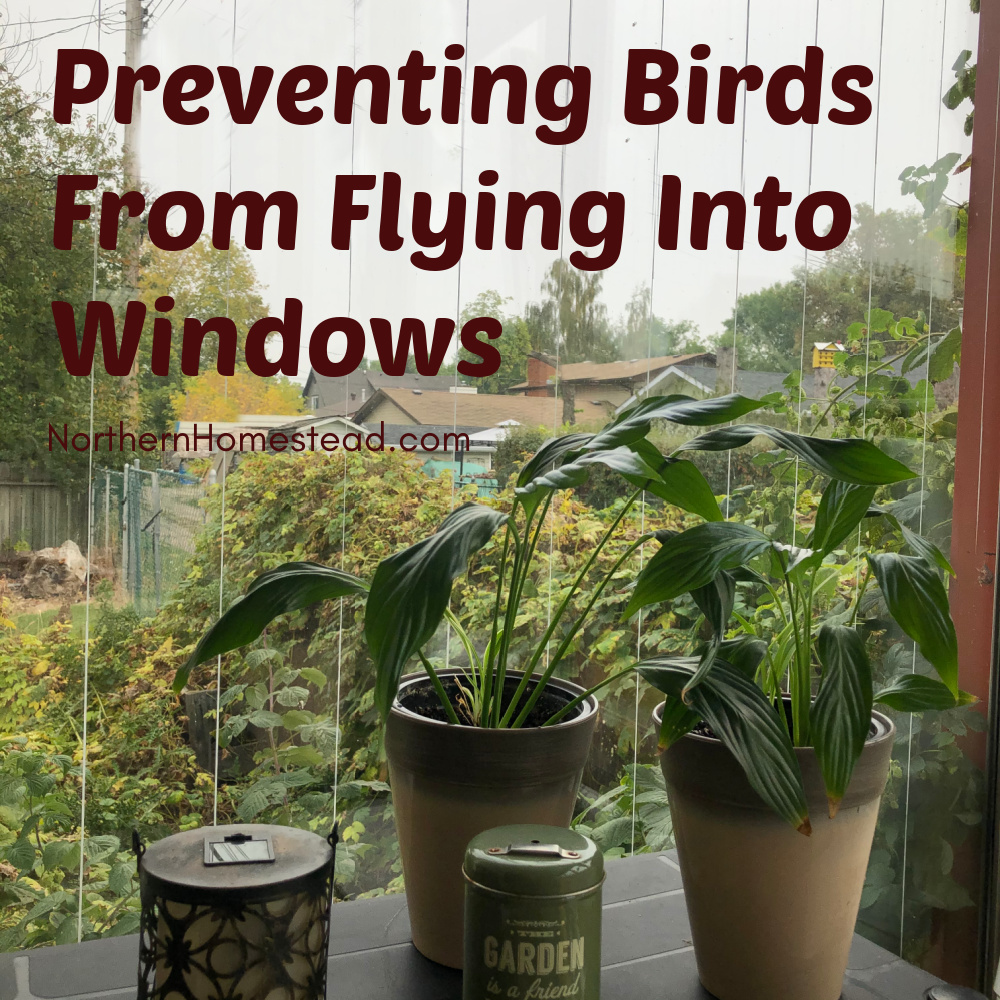
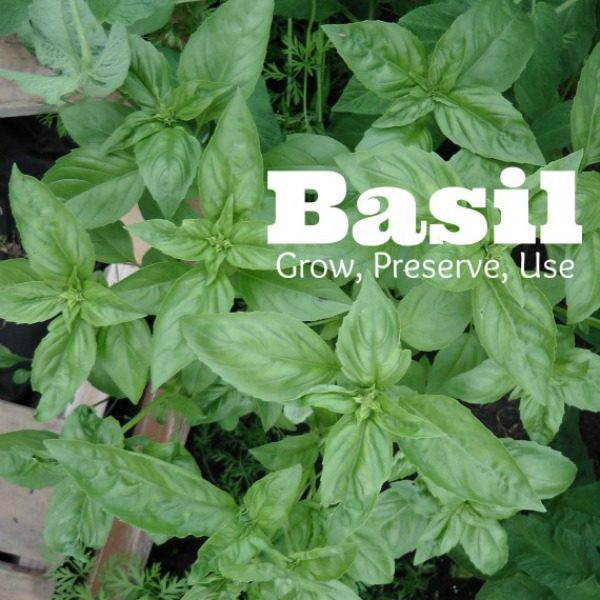

I always learn so much about gardening when I read your posts. I like the idea of growing salad the hydroponics way and forgetting it until time to harvest. I agree, food is so much better when you grow it yourself. I’m going to try this.
I am glad to hear you do :). Hope the salad grows well for you!
I didn’t know it could be so simple! My husband and family are building an aquaponics farm, and that is not so simple, but fun to experience. Thanks for sharing on the Homestead Blog Hop!
Oh, good for you to start an aquaponics farm! And yes, hydroponic can be very simple.
This is so cool! Learning to grow with hydroponics is on to do list. And I’m going to turn to your blog for directions when I’m ready.
I love your beautiful, big garden Amanda. It will keep you busy for a while. And whenever you are ready, we are here.
I haven’t heard of this particular method of hydroponics, but it looks like the results speak for themselves!
They do, and it is so easy to do.
Had no idea you could grow plants this way – have never heard of it. The tomato plant is amazing. Maybe I should try this in this “up-and won- don’t know when to plant” type weather we have here.
That kind of weather is the main reason we grow hydroponically, too ;).
Do you do this outside in the summer too?
We don’t, however there is no reason you could not. Just make sure your water does not overheat. Also the lighting outside is more intense, you would need to protect the bucket from light so algae does not overtake.
Love what you said about this type of gardening. We will be and we hope to be successful this Spring!
where to buy those net containers your basil grow?
From Ikea, not sure they are still having them. Check it out.
I got them from amazon. I bought 2-inch net pots. But, if you are buying 3-inch net pots, you can get mason jars from Amazon as well.
Oh, I thought you were referring to the ornamental white net pots. The black net pots for the cubes are from Amazon.
Hi
I’m ready to start this method for arugula, spinach, watercress, mustard green. Are you still doing hydroponic?
I hesitate between Krakty and NFT. I eat at least 600g of greens per week.
I’m going to work on micro climate in my garden based on your other posts. I love your site.
Thank you
Ellen
Thank you Ellen, it is so nice to hear that the information we share is helpful. We do still use hydroponic, and NFT is our favourite for indoor growing simple because we can use the windows instead of grow light. For greens both methods work. Start small with Kratky and see if you like hydroponics. Upgrading to NFT should be easy.